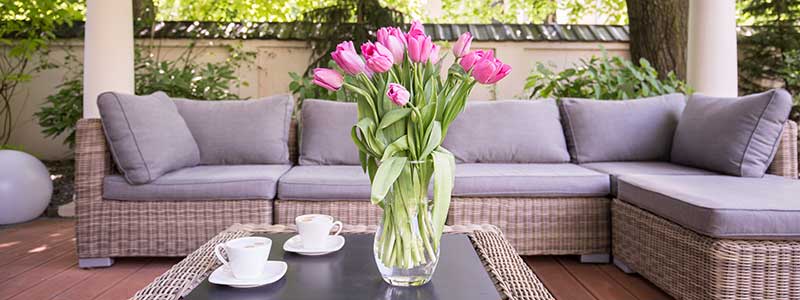Choosing Furniture For Your Conservatory
 Your choice of conservatory furniture will likely have the greatest impact on the way your conservatory feels and will also be a big factor in terms of how comfortable it is to use for extended periods. Your decision in this respect is therefore likely to be influenced by the way in which you anticipate using your conservatory as well as the overall look and feel that you are aiming for and your budgetary constraints.
Your choice of conservatory furniture will likely have the greatest impact on the way your conservatory feels and will also be a big factor in terms of how comfortable it is to use for extended periods. Your decision in this respect is therefore likely to be influenced by the way in which you anticipate using your conservatory as well as the overall look and feel that you are aiming for and your budgetary constraints.
Conservatory furniture is available in a wide range of materials and styles and care should be taken to ensure that your choice will complement your furnishings. It is also important to consider the type of flooring you have in your conservatory in order to ensure that your furniture will not damage or mark it – cushioned vinyl flooring for example is easily damaged or even punctured by pressure being exerted on it over a small area by the legs of chairs, tables and sofas.
In general , most conservatory furniture will not require a great deal of maintenance although cushions used to make conservatory furniture more comfortable in use should be removed or covered when not in use in order to prevent UV and moisture damage and extend their life significantly.
Some of the available types of furniture suitable for conservatories are covered below.
Cane Conservatory Furniture
Cane is widely used in furniture around the home and is particularly suited to conservatory furniture where is has traditionally been used for many years. It can be used to create chairs, armchairs, sofas and tables, either alone or in conjunction with other materials.
Cane is a natural material that grows predominantly in southern Asia – much of the cane produced is of Thai, Malasian or Indonesian Origin. Cane is a climbing plant that can grow to extreme heights of over 200m. It is harvested from the bottom of the plant – being cut down and then pulled from the trees that it latches onto with its thorns. The cane is then de-thorned, treated and dried.
Cane is an extremely strong and durable material and also has the benefit of being lightweight, which translates into long lasting conservatory furniture that is easy to move around as required – for example, you may wish to take your conservatory furniture into the garden on a hot summer’s day.
Cane conservatory furniture is usually varnished to increase its longevity and to allow a variety of finishes and it is easy to care for and maintain – it requires little more than dusting with a dry cloth, or wiping down with a damp cloth should it become stained.
While cane furniture is an excellent choice for a conservatory and will cope admirably with the temperature ranges found in a conservatory, you may find that your chosen cushions may tend to fade under the extreme levels of UV light that they are exposed to and so it would be advisable to remove or cover them when not in use.
As cane is a natural product, some slight colour variation between items is inevitable but will in most cases be colour matched by the manufacturers or suppliers when purchased in sets – it is worth checking this.
Selecting cane furniture manufactured from cane harvested from renewable sources is a great way of furnishing your conservatory in an environmentally responsible manner.
Rattan Conservatory Furniture
Rattan is a vine-like palm plant grown in tropical regions throughout Asia, Africa and elsewhere. Around three quarters of the world’s rattan exists in Indonesia. It is similar to cane in that it grows upwards by clinging to other forest trees using thorns or spines and can grow to lengths of several hundred metres.
Rattan can be put to many uses – the outer skin of the plant is typically removed and can be processed and used for weaving and the inner core of the plant can be put to different uses depending on its diameter – for example the thicker parts maybe 50-70mm in width and can be used for frames while the thinner parts of the plant can be woven around these frames to make furniture such as chairs, tables and sofas. Metal frames are also commonplace as this makes the resulting furniture even more durable.
Rattan possesses many of the desirable qualities of cane in that it is strong, durable, flexible and lightweight. Good quality rattan is highly resistant to splintering and will last for many years – cheaper rattan that has not been correctly nurtured will not be as durable.
Rattan can be painted or stained and so rattan conservatory furniture is available in a wide range of colours and finishes.
Rattan sourced from sustainable sources is a good environmentally responsible furniture choice.
Synthetic rattan-style products are also available and these have the added benefit of being able to withstand the elements and UV light to an even greater degree, often making them suitable for use as outdoor garden furniture as well as conservatory furniture.

